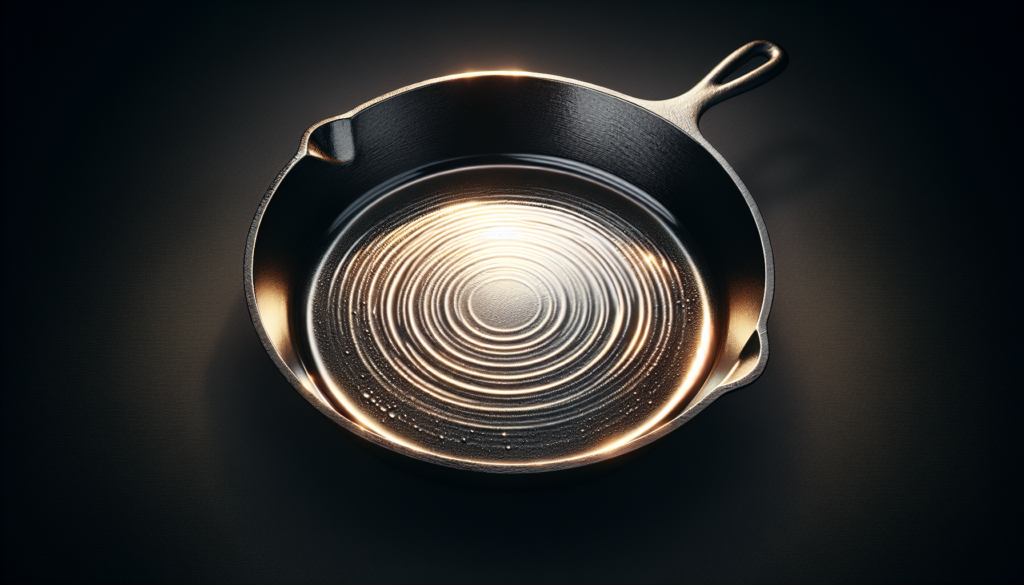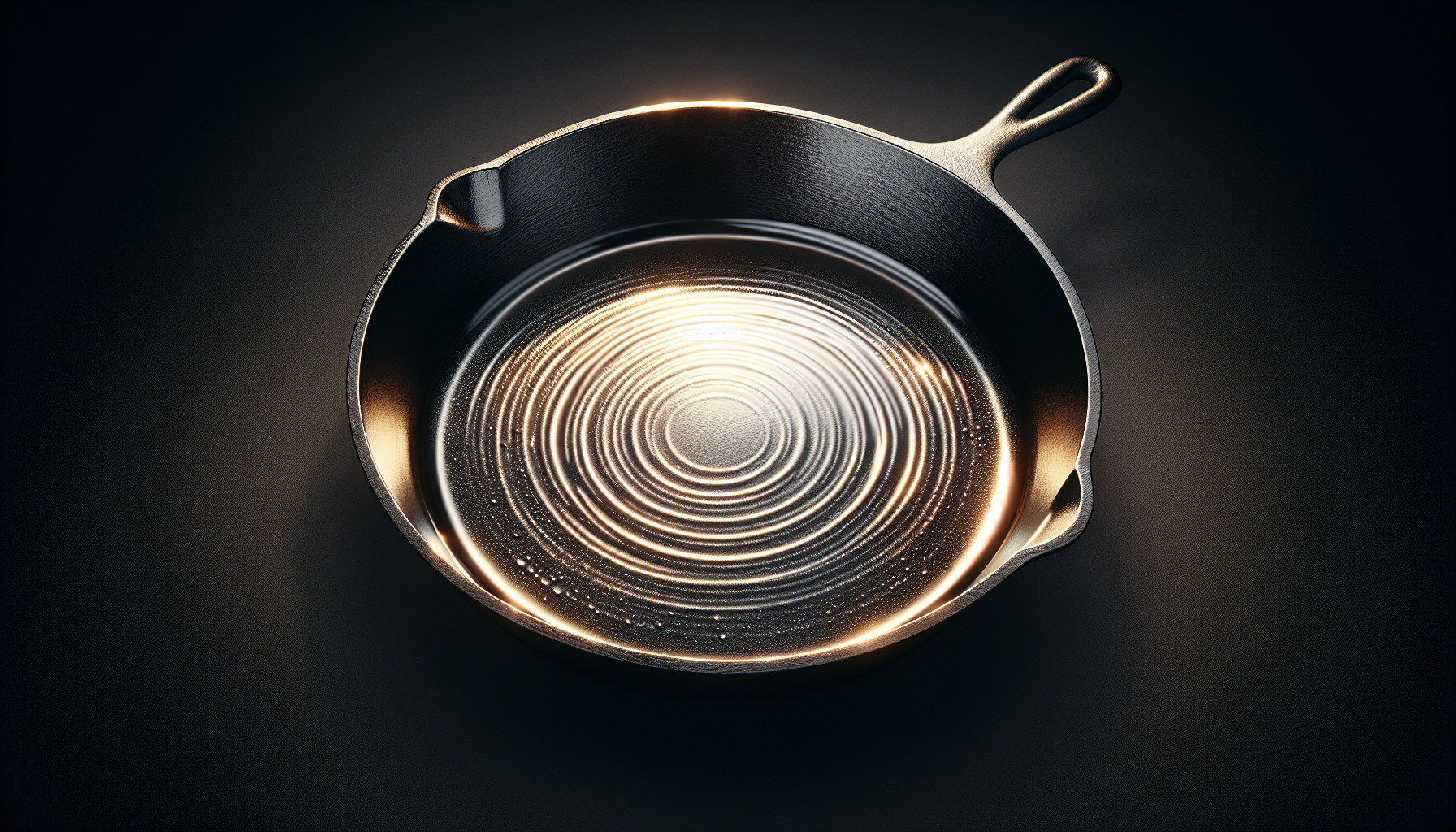So, you’re faced with a slight dilemma: your beloved cast iron pan has developed a few stubborn rust spots. Don’t worry, though, because in this article, we’ve got you covered with some simple steps to remove that pesky rust and bring your pan back to its former glory. By following these easy-to-follow instructions, you’ll soon have a perfectly seasoned cast iron pan that’s ready to whip up delicious meals once again. So, let’s roll up our sleeves and bid farewell to that rust, shall we?
Steps to Remove Rust from a Cast Iron Pan
If you’ve noticed rust on your beloved cast iron pan, don’t worry! With the right supplies and a little bit of time, you can easily remove the rust and restore your pan to its former glory. In this article, we’ll walk you through the step-by-step process of removing rust from a cast iron pan, so let’s get started!

Step 1: Gather the Necessary Supplies
Before we dive into the rust removal process, it’s important to gather all the supplies you’ll need. Here’s a list of what you’ll need to have on hand:
– Steel wool or scrub brush
– Dish soap
– Warm water
– White vinegar
– Baking soda
– Paper towels
– Cooking oil
Having these supplies ready will make the rust removal process much smoother and more efficient.
Step 2: Assess the Damage
The first step in tackling any rust issue is to assess the damage on your cast iron pan. Take a close look at the rust spots and determine the severity of the rust. Is it just a few small spots, or has the rust spread extensively? Additionally, take this opportunity to identify any additional issues with the pan, such as cracks or rough surfaces that may require extra attention.
Step 3: Scrub and Remove Loose Rust
To begin removing the rust, use a steel wool or scrub brush to scrub the pan’s surface. Apply gentle pressure and focus on the areas with rust. This scrubbing action will help to loosen and remove any loose rust particles from the pan. Repeat this process as necessary until you see a significant improvement in the rusted areas.
Calphalon cookware 10-Piece Cookware review
Step 4: Wash the Pan
After scrubbing off the loose rust, it’s time to give your pan a good wash. Prepare warm soapy water by mixing dish soap with warm water in a sink or basin. Place the pan in the soapy water and use a sponge or scrub brush to clean the entire surface of the pan. Pay special attention to the rusted areas. Once clean, rinse the pan thoroughly to remove any soap residue, and then dry it completely with a clean towel or paper towel.

Step 5: Create a Vinegar Solution
White vinegar is a great natural ingredient that can help remove rust from your cast iron pan. In this step, you’ll create a vinegar solution to soak your pan in. Mix equal parts white vinegar and water in a container large enough to hold the pan. Place the pan in the solution, ensuring it is fully submerged. Allow the pan to soak for about an hour, giving the vinegar time to react with the rust.
Once the soaking time is up, gently scrub the pan with steel wool or a scrub brush to further remove any remaining rust. Be cautious not to scrub too vigorously, as you don’t want to damage the pan’s surface. After scrubbing, rinse the pan thoroughly with water to remove any vinegar residue.
Step 6: Rinse and Dry
With the vinegar step complete, it’s time to give your pan another good rinse. Rinse it thoroughly with water, ensuring all vinegar residue has been washed away. Take a close look at the pan to check for any remaining rust. If you notice any stubborn rust spots, you may need to repeat certain steps or try alternative methods. Once you’re satisfied with the rust removal, dry the pan completely to prevent any future rust formation.
Step 7: Apply Baking Soda Paste
Baking soda is a versatile household ingredient that can be used for many cleaning purposes, including rust removal. To create a baking soda paste, mix baking soda with a small amount of water to form a thick consistency. Apply the paste to the remaining rusted areas of your cast iron pan and gently scrub using a brush or steel wool. Let the paste sit on the pan for a few minutes to allow the baking soda to work its magic. Afterward, rinse the pan with water and dry it completely.
Step 8: Oil and Season the Pan
Properly oiling and seasoning your cast iron pan is essential for maintaining its durability and preventing future rust. Here’s what you need to do:
- Heat the pan on low: Place the pan on a stovetop burner and heat it on low for a few minutes. This will open up the pores of the pan’s surface, allowing the oil to penetrate.
- Apply a thin layer of cooking oil: Using a heat-resistant brush or a paper towel, apply a thin layer of cooking oil to the entire surface of the pan, including the handle.
- Spread the oil evenly: Make sure the oil is spread evenly across the pan, leaving no excess oil pooling in any particular area.
- Allow it to cool: Let the pan cool completely. This will allow the oil to bond with the pan’s surface, creating a protective barrier against moisture and rust.
- Wipe off excess oil: After the pan has cooled, use a clean paper towel to wipe off any excess oil. You want a thin, barely visible layer to remain on the pan.
- Season the pan if necessary: If your pan’s seasoning has been affected by the rust removal process, you may need to re-season it. Follow the manufacturer’s instructions or refer to our article on seasoning a cast iron pan to properly restore the seasoning.
Step 9: Store the Pan Properly
To prevent future rusting, it’s important to store your cast iron pan properly. Follow these tips to ensure your pan stays rust-free:
- Ensure the pan is completely dry before storing it. Moisture can promote rust formation.
- If you have multiple Cast Iron Pans, place a paper towel between them to prevent any possible scratching or damage.
- Store the pan in a dry location. Avoid storing it in a damp area such as under the sink or near a window where it’s exposed to moisture.
- Consider using a pan protector or a soft cloth to cover the pan when storing it. This will provide an extra layer of protection against any accidental contact with moisture.Calphalon cookware 10-Piece Cookware review
Step 10: Maintain Regular Maintenance
Preventing rust from returning is an ongoing process. Follow these maintenance tips to keep your cast iron pan in top condition:
- After each use, make sure to dry the pan thoroughly. Use a clean towel, paper towel, or even place it on a warm stovetop burner for a few minutes to ensure it’s completely dry.
- Apply a thin layer of oil regularly. This helps to maintain the pan’s seasoning and protect it from moisture. Ideally, coat the pan with oil after each use or whenever you notice any signs of dryness.
- re-season the pan periodically. Over time, the seasoning on your cast iron pan may wear off or become damaged. If this happens, it’s crucial to re-season the pan to restore its protective layer.
- Avoid using excessive heat. While cast iron is known for its ability to withstand high temperatures, exposing it to excessive heat can damage the pan’s surface and potentially lead to rust formation. Stick to medium or low heat settings when cooking with your cast iron pan.
By following these steps and incorporating regular maintenance into your routine, you can keep your cast iron pan free from rust and enjoy its many benefits for years to come. Happy cooking!




